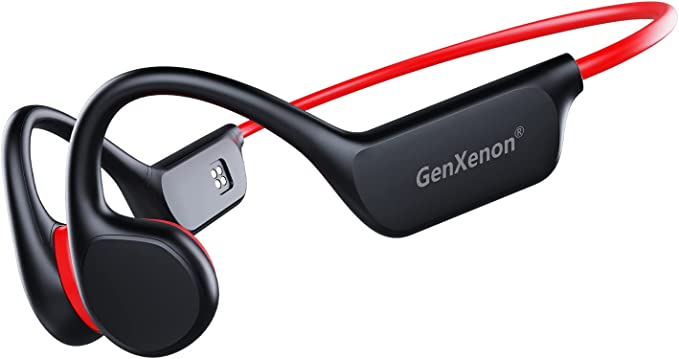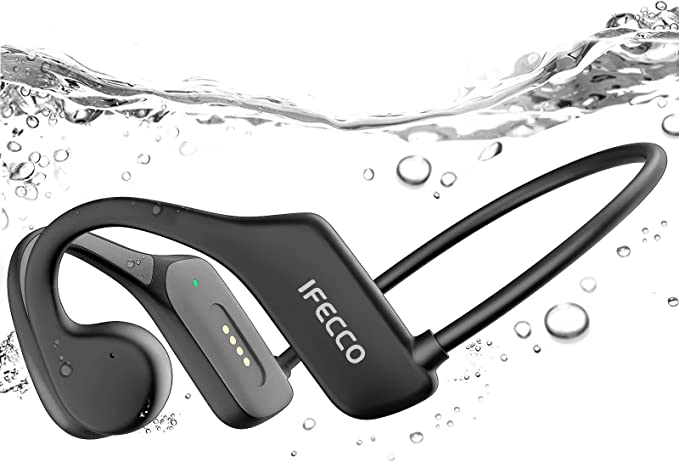Beyond the Star Rating: What "Bad" Reviews for a Good Product Teach Us About Being a Smarter Consumer
Update on Oct. 19, 2025, 5 p.m.
In the vast, anonymous battlefield of online reviews, we’ve been trained to think in a simple binary: 5 stars mean “buy,” and 1 star means “avoid.” But what do you do with the messy, complicated, and far more interesting products that live in the middle? Consider a product like the IFECCO X5 Bone Conduction Headphones, which holds a respectable but imperfect 3.8-star rating. You read the 5-star reviews, and users praise its core function: “They work!” “The sound while swimming is quite good.” Then you read the 1- and 2-star reviews, and users complain about a loose fit or “controls designed by a maniac.”
The novice consumer sees a contradiction and gets confused. The smart consumer sees a puzzle and gets curious. That 3.8-star rating isn’t a sign of failure; it’s an invitation to understand a fundamental truth of product design: every product is a bundle of compromises. To solve this puzzle, we must stop acting like judges and start acting like detectives. The negative reviews aren’t warnings; they are clues.
Clue #1: The “One-Size-Fits-None” Dilemma
A common complaint is about the fit: “It’s a little too big for me,” or “If it weren’t for my swim goggles pinning these up against my head, I don’t think they’d stay on.” Our immediate reaction is to label this as a design flaw. But a detective asks, why would it be designed this way? The answer lies in the brutal reality of anthropometry—the scientific study of human body measurements.
Human heads come in an astonishing variety of shapes and sizes. To create a single, non-adjustable device that fits everyone perfectly is a near-impossible task, especially within the tight cost constraints of a sub-$50 product. Creating multiple sizes (S, M, L) would triple the manufacturing and inventory costs. Incorporating an adjustable band would add complexity, weight, and another potential point of failure—a major risk for a waterproof device.
So, the designers made a trade-off. They chose cost-effectiveness and structural simplicity over personalized ergonomics. They likely designed the band to fit the 50th or 60th percentile of head sizes, knowing it would be slightly loose on some and slightly tight on others. The negative review doesn’t reveal that the product is “bad”; it reveals that the reviewer’s head dimensions fall outside the product’s optimized target range. It also reveals the product’s design priority: accessibility for the many over perfection for the few.
Clue #2: The Treachery of a Button
The second major clue is the infamous control scheme: “To go to the next track you press and hold the - button.” This feels like a betrayal of decades of universal electronic logic where ‘+’ means forward/up and ‘-‘ means backward/down. It seems, as one user put it, “insane.”
But let’s put on our Human-Computer Interaction (HCI) detective hat. Where is this product used? Underwater, during vigorous exercise. Fine motor control is compromised. You can’t see the buttons. Your fingers are wet and clumsy. In this environment, what is the most important attribute of a control system? Not intuition, but reliability and resistance to accidental presses.
A double-press to skip a track, a common convention, is difficult to execute reliably with wet fingers while swimming. A short press for volume and a long press for track-skipping is a more distinct, deliberate action. But why is ‘-‘ forward? Here’s a plausible theory: It’s a trade-off between usability and safety. Imagine you’re trying to turn the volume down with the ‘-‘ button. If your long-press is slightly too long, what’s the worst that happens? The track skips forward. Now imagine if long-pressing ‘+’ (volume up) skipped the track forward. If your press is too long while trying to crank the volume, you might inadvertently skip a song. By assigning the “destructive” action of skipping a track to the volume-down button, they may have prioritized preventing accidental track changes when a user is trying to increase the volume. It’s a strange logic, but it’s a logic born from a specific, challenging context. The review reveals a trade-off: intuitive design was sacrificed for in-the-pool functional reliability.
The Gospel of “Good Enough”
These clues lead us to the core truth of product creation. No product is perfect because the act of creation is an endless series of trade-offs. Engineers and designers are constantly balancing a dozen competing priorities: features vs. cost, durability vs. weight, ease of use vs. powerful functionality. A great product isn’t one that has no flaws; it’s one that has made the right compromises for its target audience and price point.
The 3.8-star product isn’t a failure; it’s an honest product. It tells you, “I am excellent at letting you hear music underwater at a very reasonable price. To achieve this, I had to make some compromises on universal fit and intuitive controls.”
How to Be a Product Detective
The next time you’re shopping, don’t just look at the star rating. Dive into the 2-, 3-, and 4-star reviews, because that’s where the truth about a product’s trade-offs lives. Instead of asking “Is this product good or bad?”, ask these questions:
- What is the core problem this product solves? Does it solve that problem well, according to most users?
- What are the most common complaints?
- What trade-off does this complaint reveal? (e.g., Is it a durability vs. cost issue? An ease-of-use vs. feature-set issue?)
- Is this a trade-off I am willing to accept?
A runner with a smaller head might read the reviews for the IFECCO X5 and conclude the fit is a deal-breaker. A swimmer with an average-sized head who just wants a simple, cheap device for laps might conclude that a weird button logic is a tiny price to pay for the freedom of underwater audio. Both consumers are right. They’ve just used the clues in the reviews to determine if the product’s specific set of compromises aligns with their personal needs.
Stop looking for the perfect product. It doesn’t exist. Instead, look for the right set of imperfections. That’s the secret to being a truly smart consumer.
























































